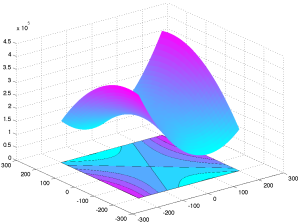Quadratic functions in two variables
Two examples of quadratic functions are ![]() , with values
, with values
![]()
![]()
The function
![]()
is a form, since it has no linear or constant terms in it.
 |
Level sets and graph of the quadratic function |
 |
Level sets and graph of the quadratic function |
